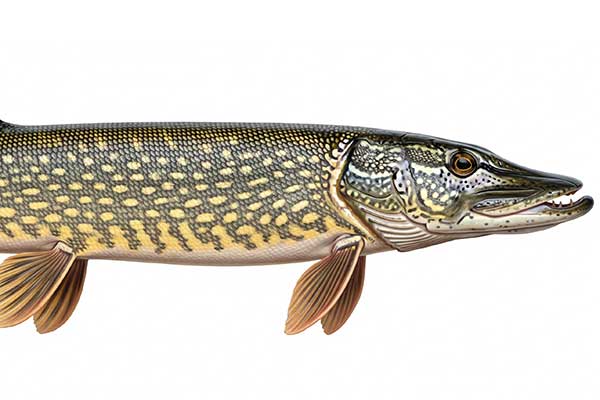The Pike (Gädda)
The undisputed king of our lakes and rivers
Introduction to the Pike
The pike is the top predator in most of our waters. Its impressive size, aggressive hunting behavior, and brutal strikes make it the absolute favorite fish of many anglers. The waters of the Burträsk region are known for their healthy and trophy-sized pike populations.

The Meter-Pike Dream
The waters around Bettys Hus, especially the nearby Lake Bygdeträsket, offer a realistic chance of catching a pike over one meter in length. Large lures and patience are the keys to success here!
Tips & Tactics for Pike Anglers
Fact Box: Pike
- Latin Name: Esox lucius
- Habitat: Lakes and slow-flowing rivers
- Special Feature: Ambush predator that strikes from cover
Which are the best pike waters?
Bygdeträsket is nationally known for its large pike. But Burträsket, Göksjön, and Tallträsket also host excellent populations.
When is the best season for big pike?
Spring (May-June) after spawning, when the fish are hungry, and autumn (September-October), when they fatten up for winter, are the absolute top times for trophy specimens.
Which lures work best?
Large soft plastics (15-25 cm) are a safe bet year-round. Wobblers, jerkbaits, and spinnerbaits are also very effective. Lure color should be adapted to the water color: bright colors in murky lakes, natural colors in clear lakes.
What do I need to consider for Catch & Release?
Catch & Release is strongly recommended for large pike over 75-80 cm, as they are extremely important for the population. Use a rubberized unhooking mat, a large rubberized landing net, and quickly remove the hook with long pliers. It's best to unhook the fish in the water.
How big do the pike get here?
Fish between 60 and 90 cm are common. Specimens over one meter are possible at any time and are caught regularly. The absolute maximum size is over 1.20 m.
[[pike_q_where_to_find]]
In spring and autumn, often in shallower bays and along reed edges. In summer, the larger fish often retreat to deeper open water or steep drop-offs. Look for structures like weed beds, underwater humps, or submerged wood.
